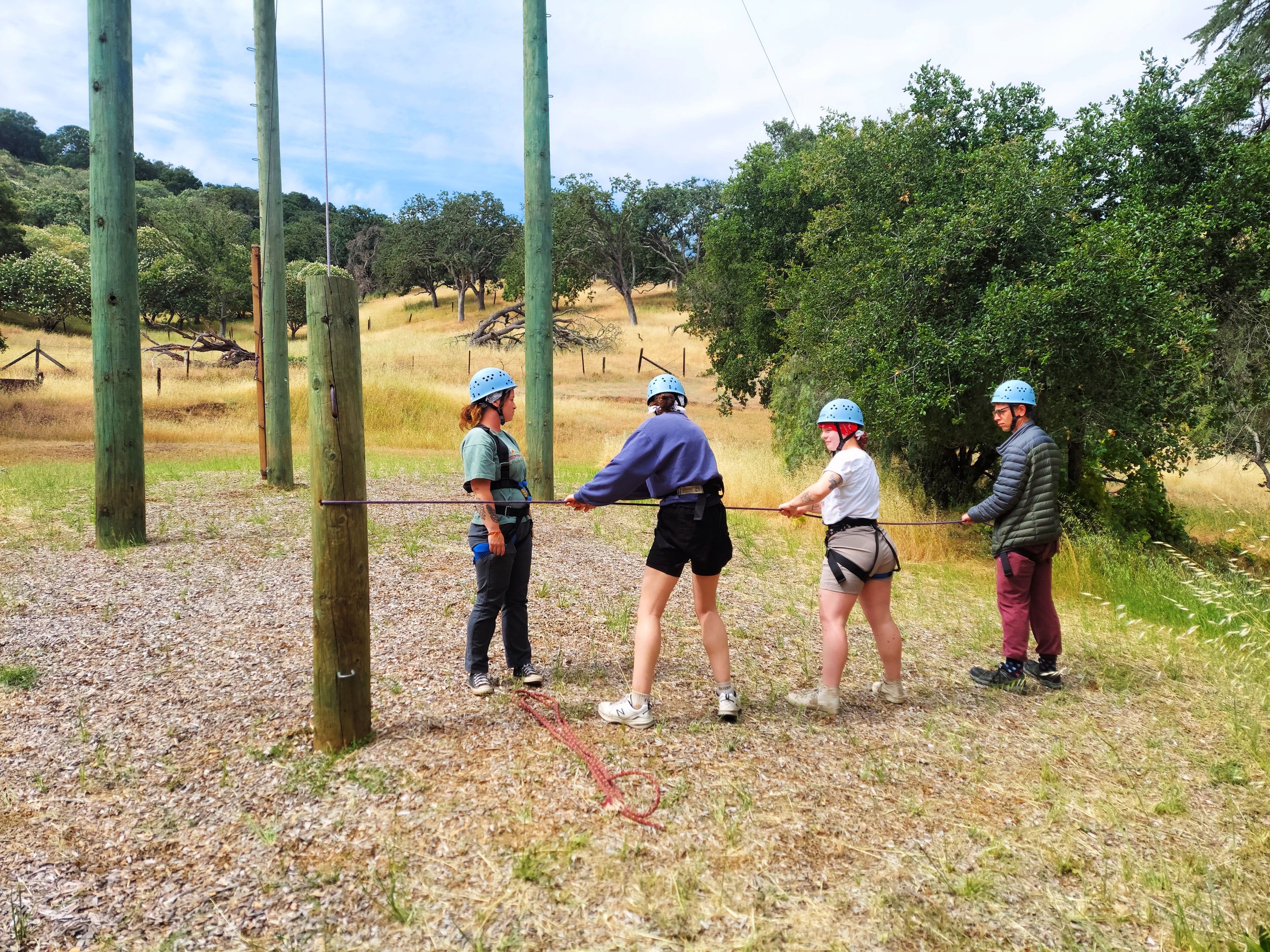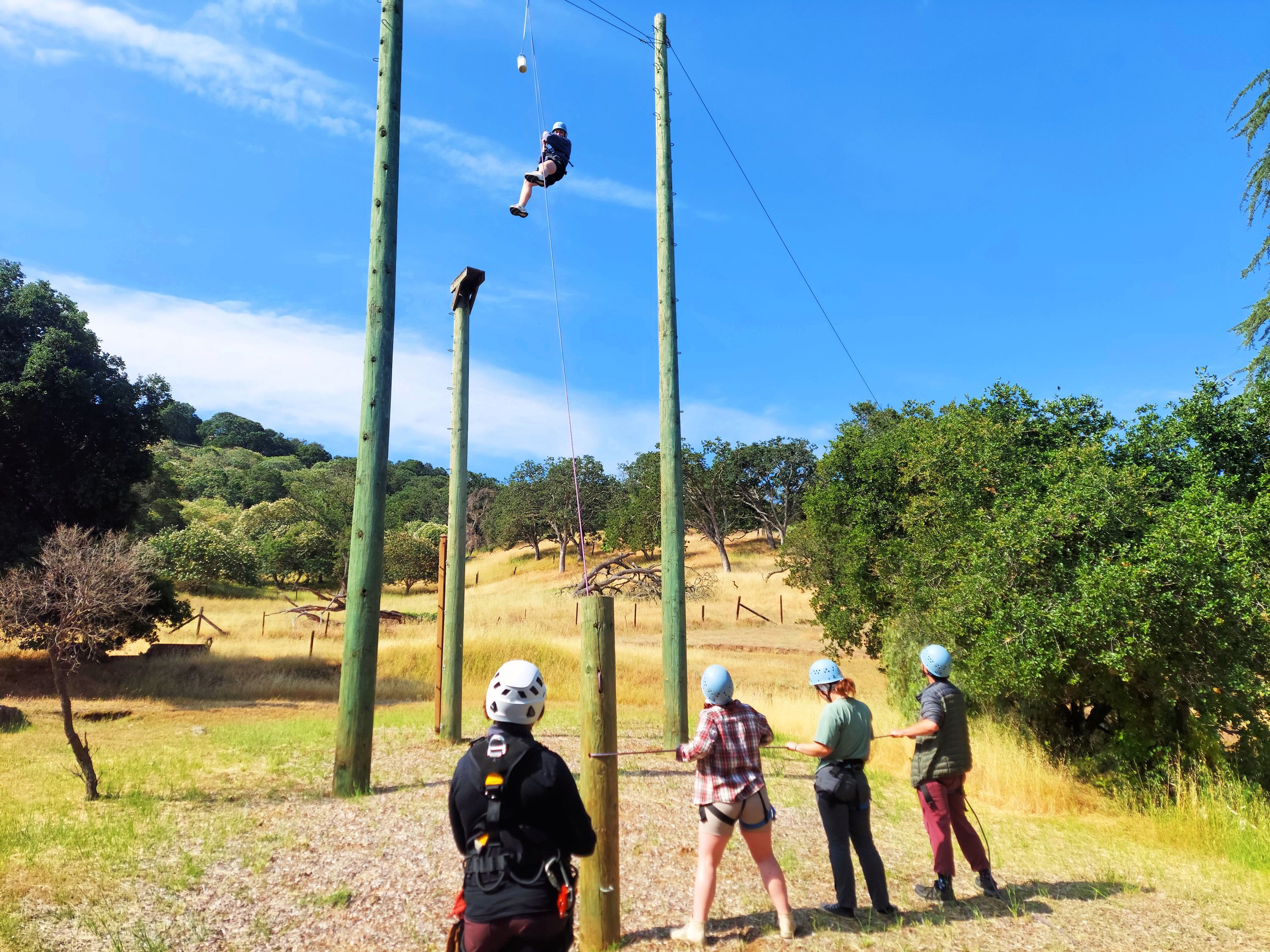Enjoy Low and High Ropes Courses at One of Our Venues.
Challenge Courses
Participation in a Challenge Course Can Be Thrilling!
It is all about getting out there, playing, and enjoying the Challenge Ropes Course.
Commitment to perform where there is uncertainty of results is a healthy decision-making process.
Proving to oneself that a seemingly insurmountable problem can be overcome is enlightening and satisfying.
There is evidence that successfully completing a demanding, fabricated problem has a significantly higher positive carryover than overcoming everyday problems.
Most of all, have fun! It is an incredible process.
-
About
A course is a series of activities, sometimes on or close to the ground (usually referred to as a low ropes course) and sometimes built on utility poles or trees or in the rafters of a building (a high ropes course).
Challenge Courses were created to emulate a wilderness-type experience in a fixed setting.
-
High Ropes
The high ropes elements are challenging activities that are high above the ground.
They are geared more toward individual challenges provided by trained facilitators.
Trained leaders will guide groups through the high ropes elements.
-
Low Ropes
The low ropes elements are structured activities that are low to the ground. Low ropes courses are purposefully geared toward team building, where a group can participate in these activities independently.
All participants utilized safe techniques and spotting techniques.
-
Location
We offer four locations in California for your group to enjoy Challenge Course activities and a climbing wall.
Monte Toyon
Camp Arroyo
CGC Gamp
Camp LodestarCheck out the forms, elements and waivers below.
-

Group Activity
Challenge courses are installed in a wide variety of places–schools, camps, park districts, and outdoor education centers, as well as in corporate training centers.
The single identifying feature is that, most often, it is an intact group that comes together to share the challengingce course experien and that a curriculum is designed for the specific outcome desired by that group.
-

Customized Courses
The course itself is comprised of many different elements. The names of these elements vary throughout the industry, as do belay systems, access systems, the number of elements at a course, and the sequence of the elements.
Each course is individually designed and built to accommodate the local terrain, climate, and program delivered at that site.
-

Climbing Walls
Climbing walls have also become increasingly popular over the last few years, partly for recreational and educational purposes.
When climbing walls are built for educational purposes, they are often used with ropes challenge courses.
Generating Expected Outcomes
About
Each challenge course program should have goals and objectives to establish a clear set of expected outcomes.
These outcomes can be set by the group, individuals, or the sponsoring organization.
Every course and group run will be different in some way, so there may be better approaches than a strict set of objectives that everyone must follow.
One way to ensure a positive and successful rope/challenge course program is to give the group and their leader time to reflect on and consider their program goals and objectives.
Goals & Objectives
The facilitators will also have predetermined, underlying objectives that support and complement the group’s objectives, which may be:
Provide a fun and safe experience.
Provide an appropriate, sequential series of activities/experiences.
Creating a feeling of comfort to ‘stretch’ personally beyond self-imposed limits.
Supportive Objectives
Trust Building
Peak Experience
Goal Setting
Humor / Fun
Challenge / Stress
Problem Solving
Teamwork
Communication
The high ropes course is a unique, high-reward, seemingly high-risk activity.
While participating in the high ropes course involves some risk, strict and thorough safety measures greatly minimize it.
For example, participants wear a safety harness system on high elements. They are suspended by a safety (belay) line if they fall.
The participants may logically understand they are safe, but their knees shake when they are 30 feet up.
In other words, the perceived risk is much greater than the actual risk.
Documents
What about pricing?
For challenge course prices, please get in touch with the Site Director at the facility you are attending or interested in.

